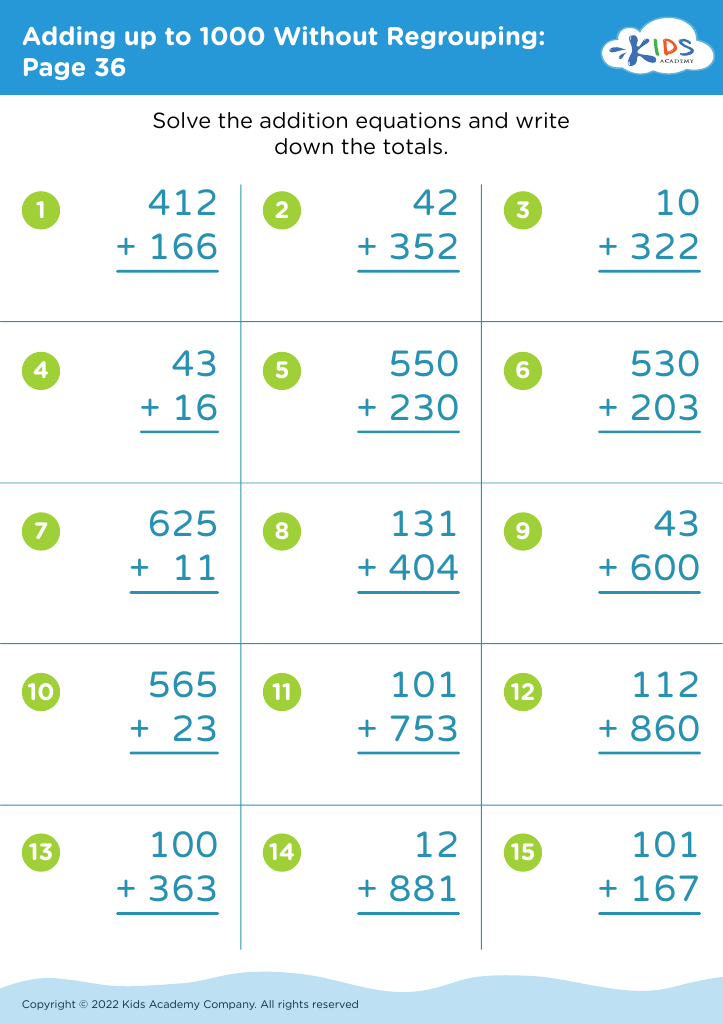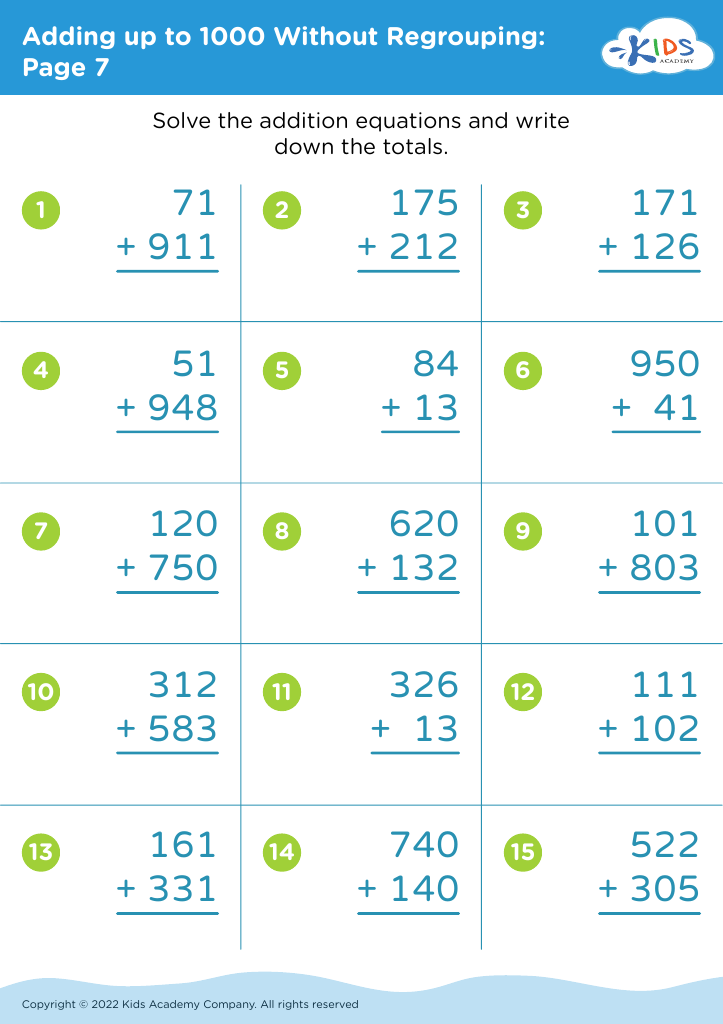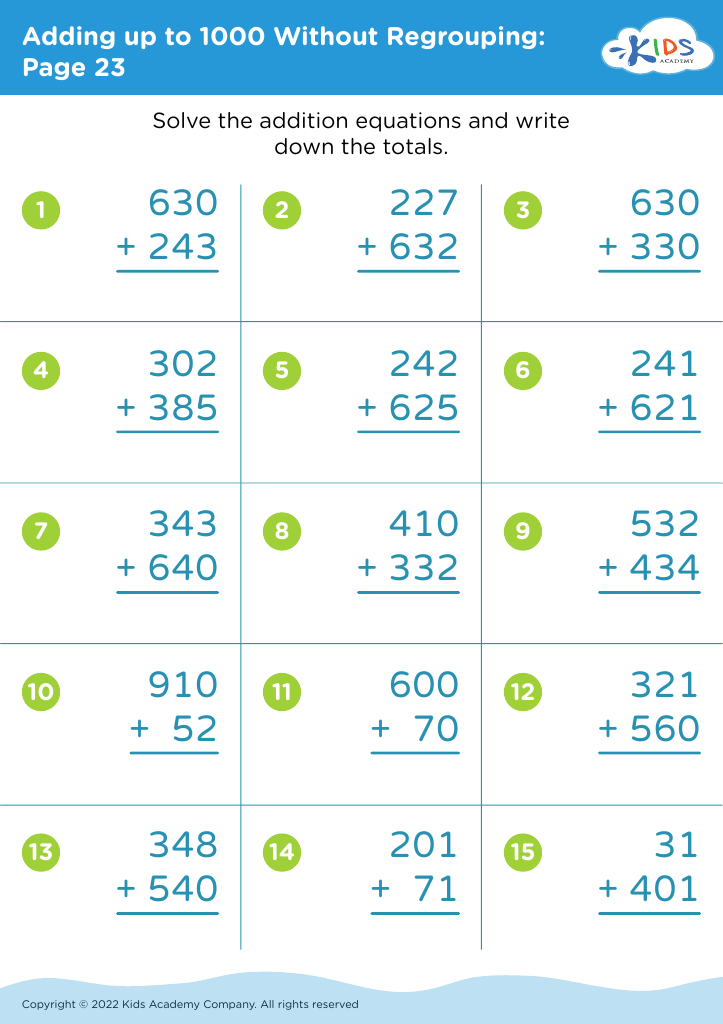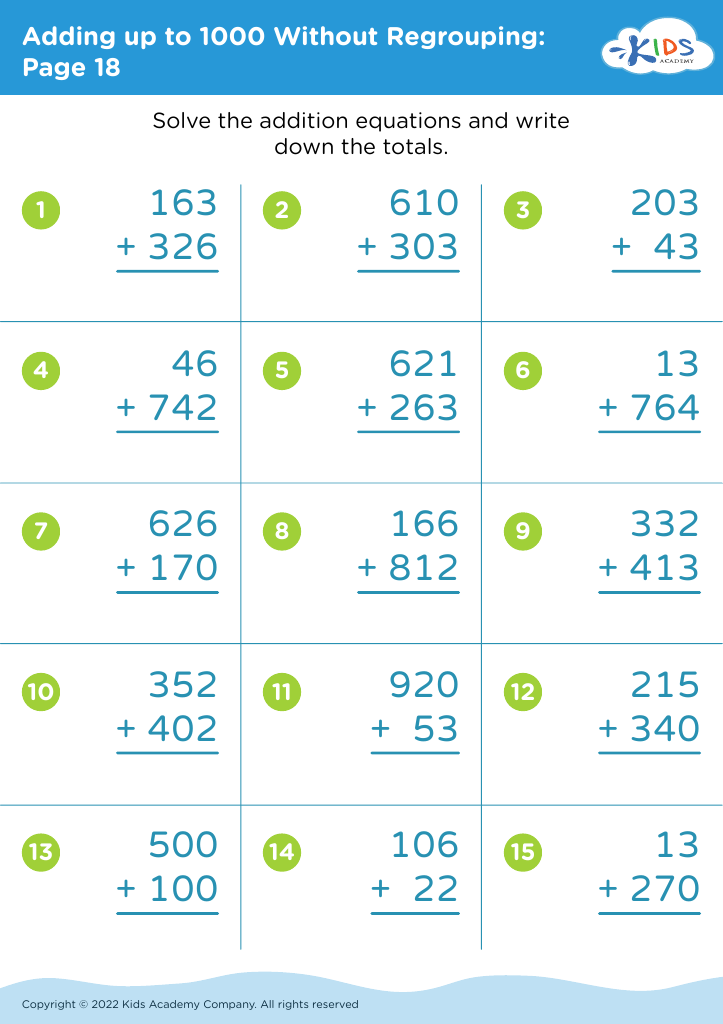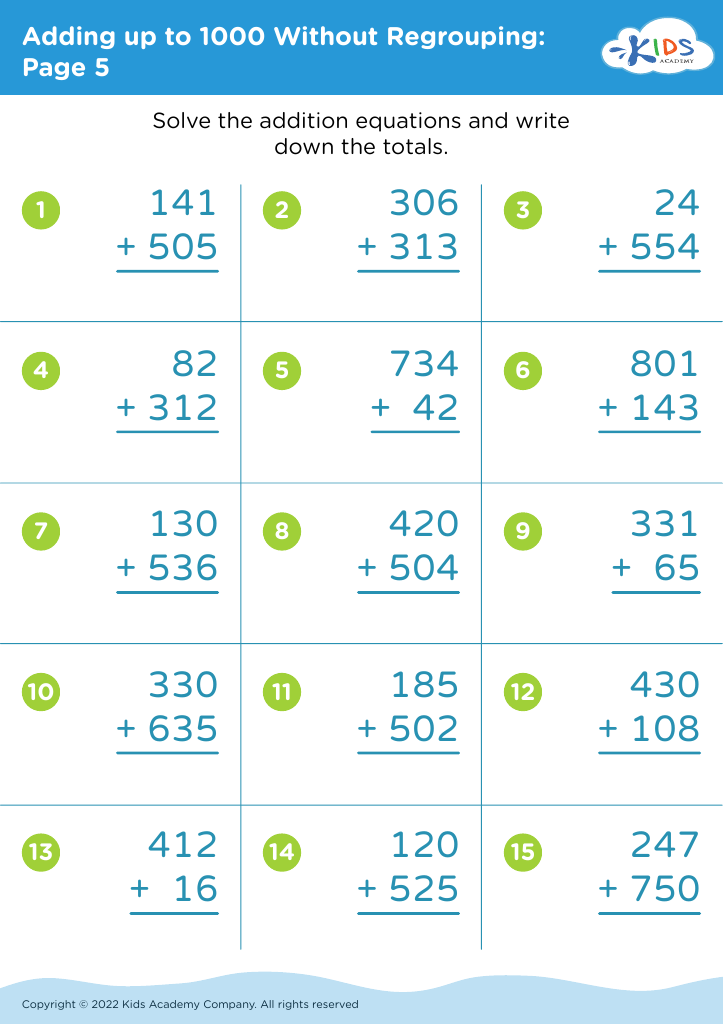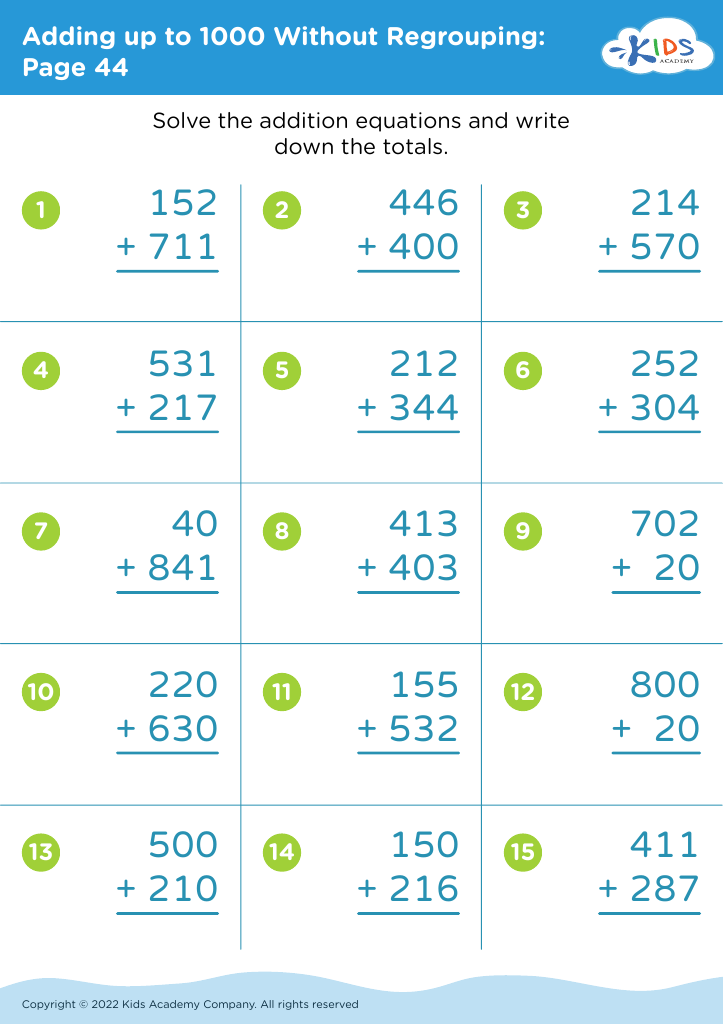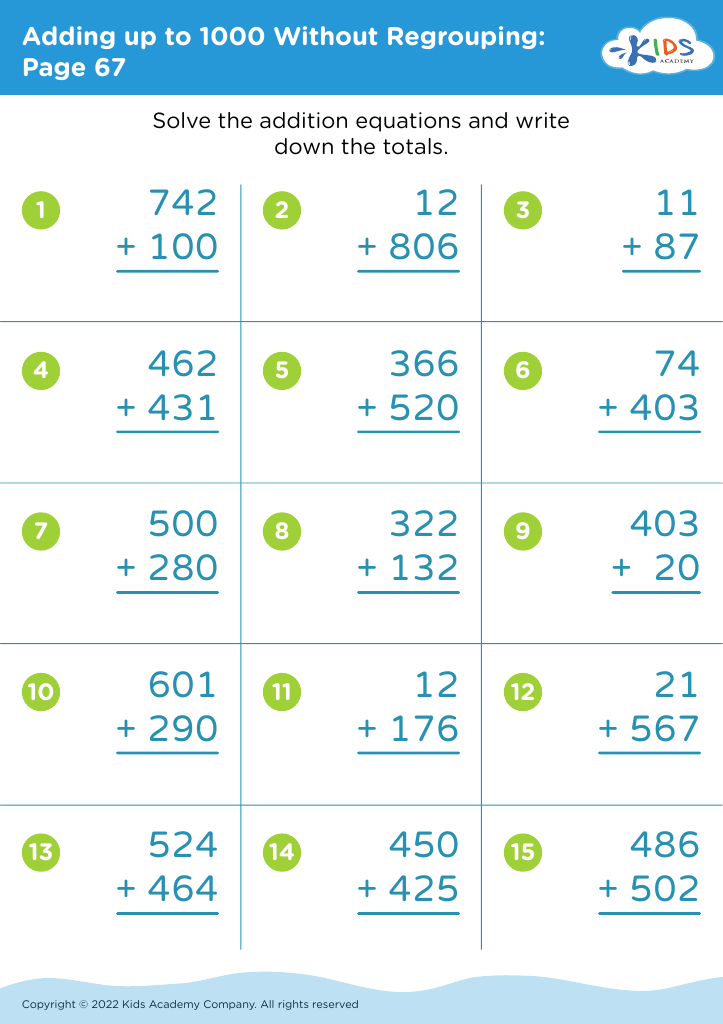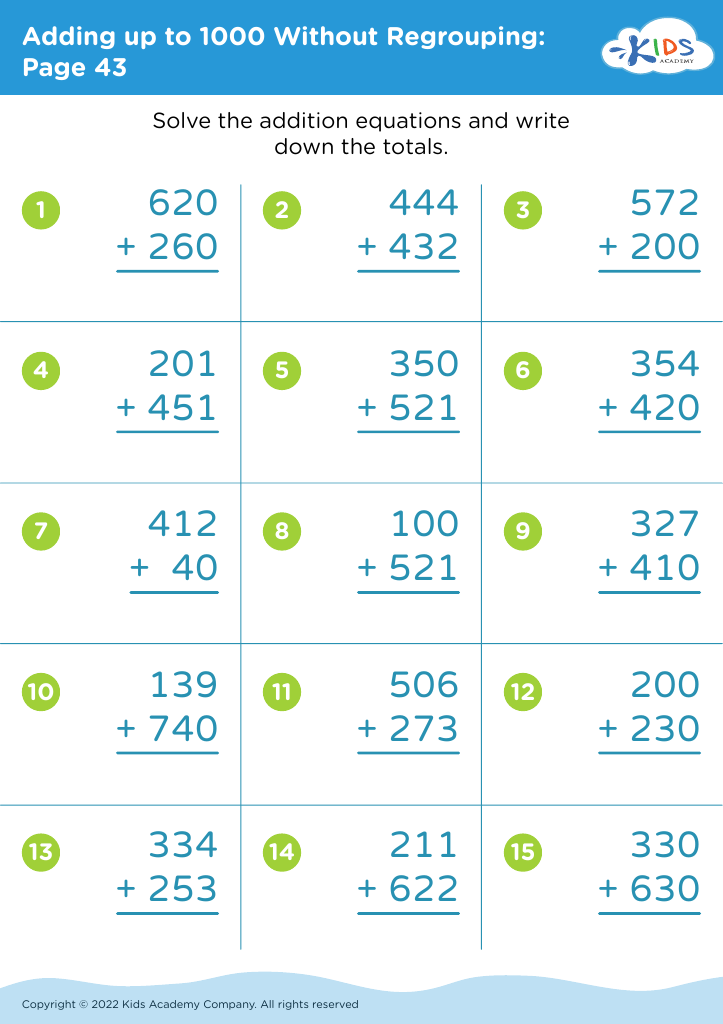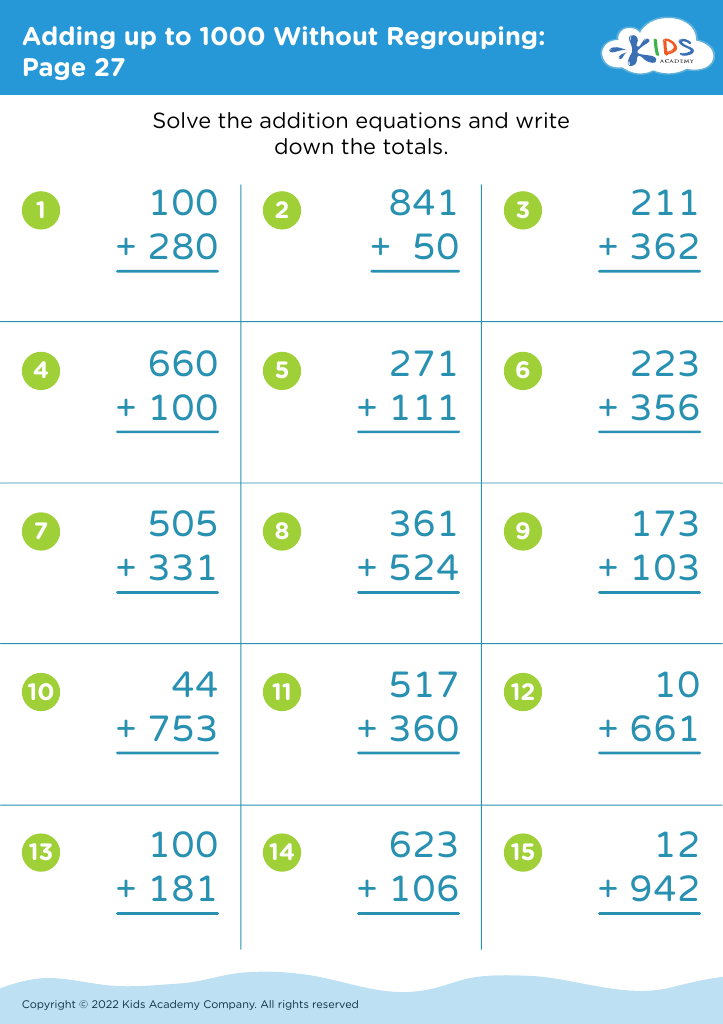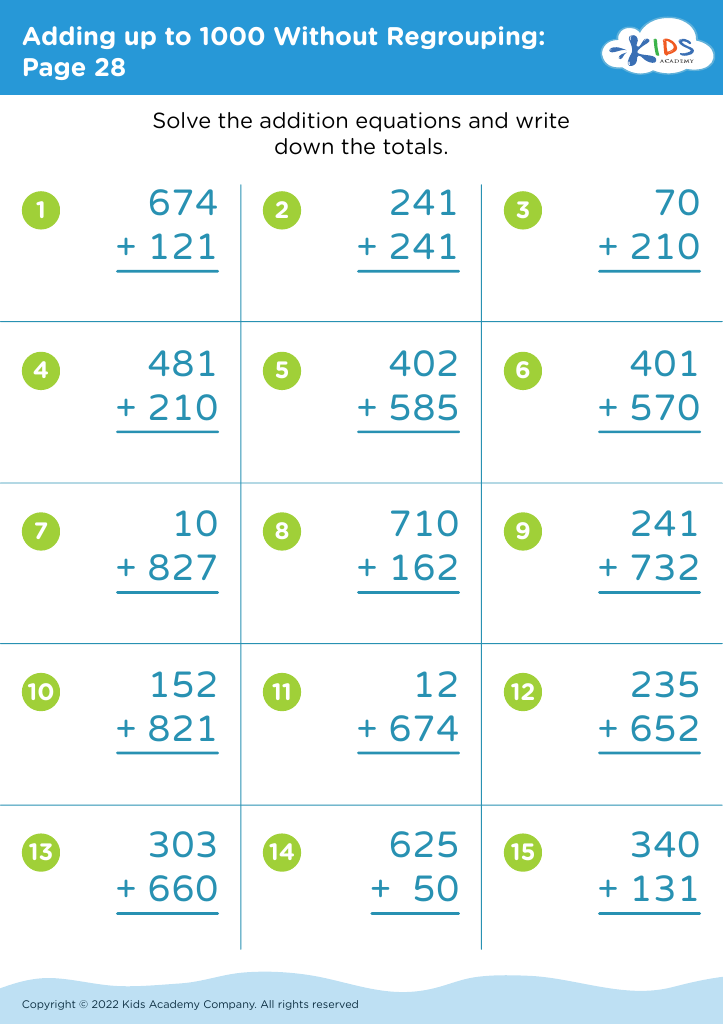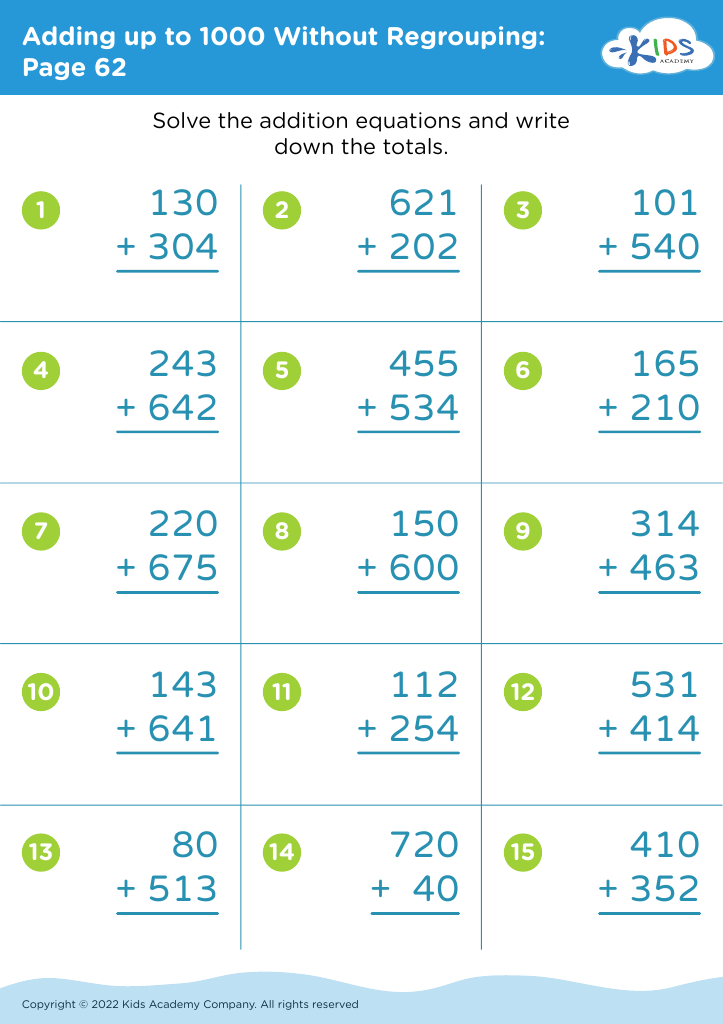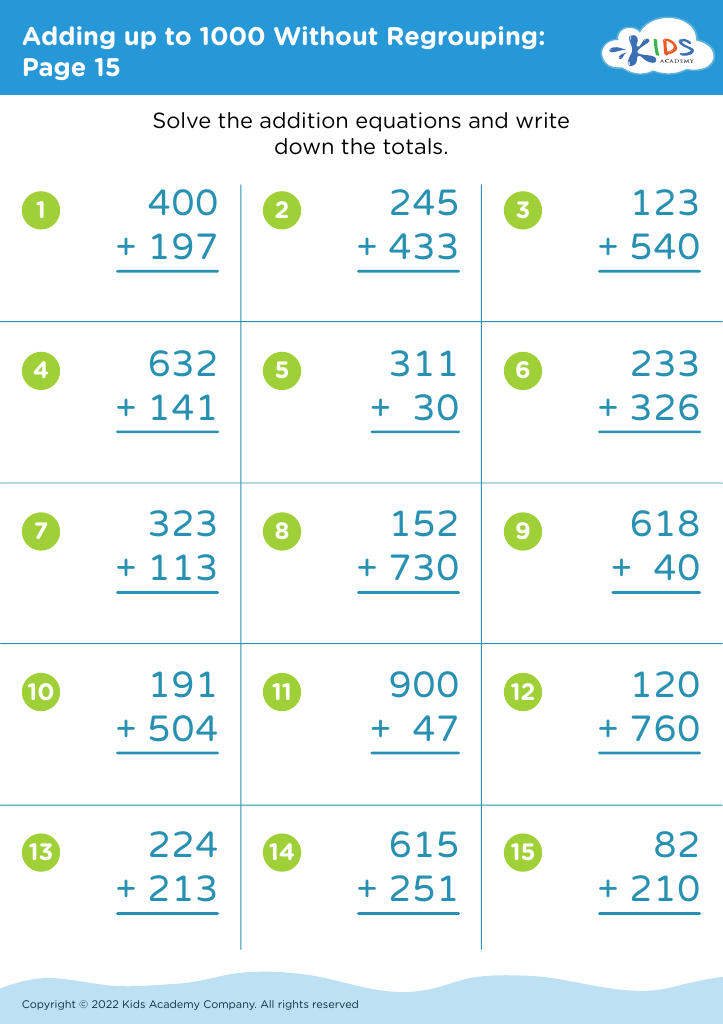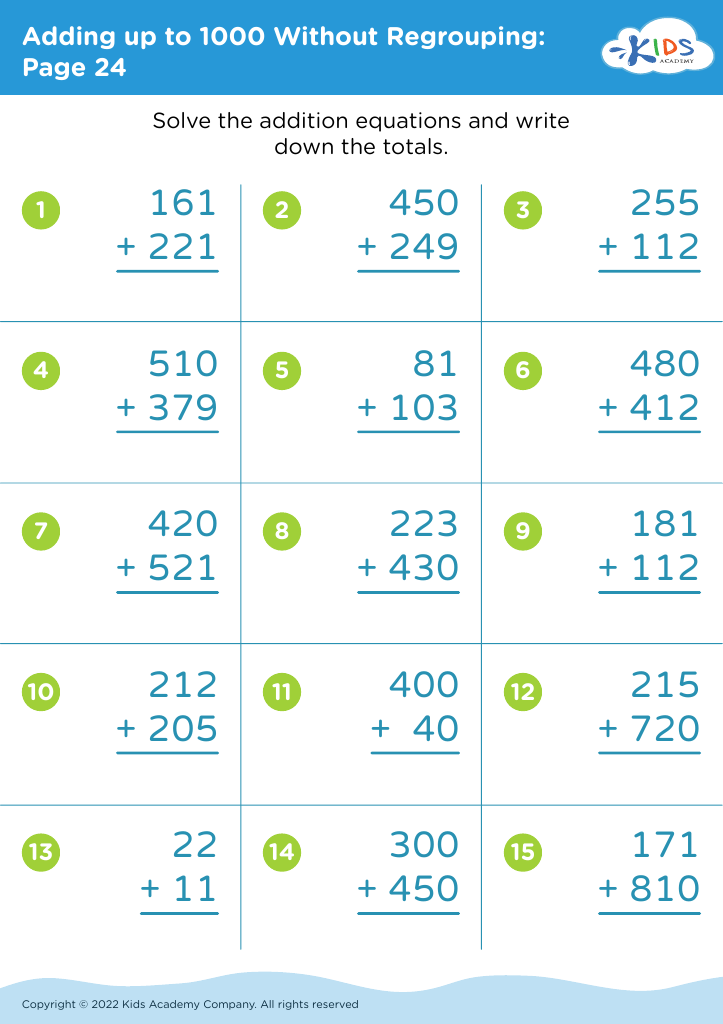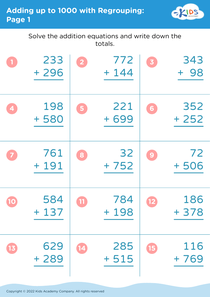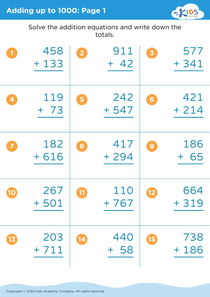Understanding fractions Adding up to 1000 Without Regrouping Worksheets for 9-Year-Olds
13 filtered results
-
From - To
Explore our "Understanding Fractions: Adding Up to 1000 Without Regrouping" worksheets, specifically designed for 9-year-olds! These engaging and interactive resources enhance students' grasp of fractions as they learn to add numbers without the need for regrouping. Our carefully crafted worksheets promote critical thinking and allow children to practice their skills in a fun, approachable way. By incorporating real-world scenarios, they help learners see the relevance of fractions in everyday life. Perfect for classroom use or at-home practice, these worksheets enrich young minds while building confidence in mathematics. Dive in and watch your child master fractions today!
Understanding fractions, especially in the context of adding up to 1000 without regrouping, is crucial for 9-year-olds as it lays the foundational skills necessary for more complex mathematical concepts in later grades. Recognizing how fractions relate to whole numbers enhances a child's number sense, promoting their ability to handle diverse mathematical tasks.
When children grasp the concept of fractions, they develop a better understanding of proportions, ratios, and percentages, critical skills in real-life situations such as cooking, shopping, or budgeting. Moreover, adding fractions and whole numbers fosters logical thinking and problem-solving abilities, crucial for overall cognitive development.
For teachers and parents, ensuring that children master these concepts helps build confidence in math, reducing anxiety around the subject. This confidence can lead to a greater interest in learning and higher academic performance, not just in math but across the curriculum.
Ultimately, supporting children in mastering fractions at this age can pave the way for success in higher-level math and analytical skills, preparing them for future educational challenges and real-world applications. Encouraging exploration and understanding of these concepts becomes an investment in their lifelong learning journey.
